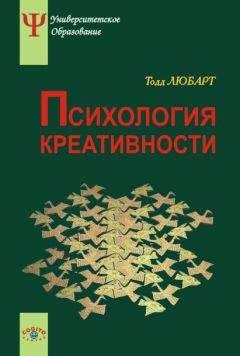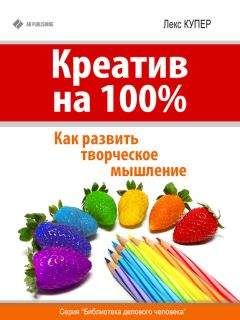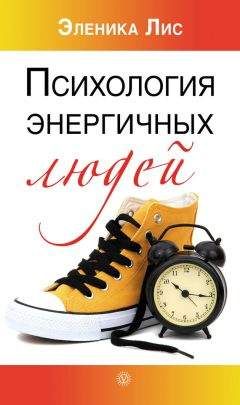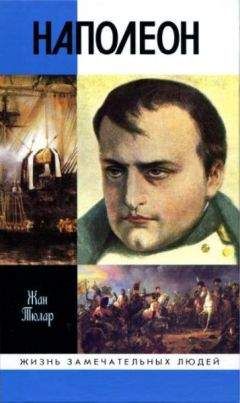Sternberg, R. J., & Lubart, T. I. (1991), «An investment theory of creativity and its development», Human Development, 34, 1–31.
Sternberg, R. J., & Lubart, T. I. (1993), «Creative giftedness: A multivariate investment approach», Gifted Child Quarterly, 37(1), 7–15.
Sternberg, R. J., & Lubart, T. I. (1995), Defying the crowd: Cultivating creativity in a culture of conformity, New York, Free Press.
Sternberg, R. J., & Lubart, T. I. (1996), «Investing in creativity», American Psychologist, 51(7), 677–688.
Sternberg, R., Wagner, R., Williams, W., Horva th, J., (1995). «Testing common sense», American Psychologist, 50(11), 912–927.
Storr A. (1972), The dynamics of creation, New York, Atheneum.
Stoycheva, K. & Lubart T.I. (2002), «La nature de la prise de decision creative», in I. Getz (ed.), Creativite Organisationnelle: Entreprendre – Regards sur Vindividu, Ventreprise et Veconomie, Paris, Vuibert.
Suler, J. R. (1980), «Primary process thinking and creativity», Psychological Bulletin, 88, 144–165.
Sulloway, F. J. (1999), «Birth order», in M. A. Runco & S. R. Pritzker (eds.), Encyclopaedia of creativity, New York, Academic press.
Tegano, D. W. (1990), «Relationship of tolerance of ambiguity and playfulness to creativity», Psychological Reports, 66, 1047–1056.
Thurstone, L. L. (1938), Primary mental abilities, Chicago, University of Chicago Press.
Torrance, E. P. (1968), «A longitudinal examination of the fourth-grade slump in creativity», Gifted Child Quarterly, 12, 195–199.
Torrance, E. P. (1972), «Un resume historique du developpement des tests de pensee creative de Torrance», Revue de Psychologie Appliquee, 22(4), 203–218.
Torrance, E. P. (1981), Thinking creatively in action and movement, Bensenville (II.), Scholastic testing service.
Torrance, E. P. (1976), Tests de pensee creative, Paris, Editions du Centre de Psychologie Appliquee.
Torrance, E. P. (1988), «The nature of creativity as manifest in its testing», in R. J. Sternberg (ed.), The nature of creativity (p. 43–75), New York, Cambridge University Press.
Torrance, E. P. (1994), Creative motivation scale, Unpublished test.
Treffinger, D. J. (1995), «Creative problem solving: Overview and educational implications», Educational Psychology Review, 7(3), 301–312.
Urban, K. K. (1991), «On the development of creativity in children», Creativity Research Journal, 4(2), 177–191.
Urban, K. K., & Jellen, H. G. (1996), Test for Creative Thinking-Drawing Production (TCT-DP), Francfort, Swets Test Services.
Valkenburg, P. M., & va n der Voort, T. H. (1994), «Influence of TV on daydreaming and creative imagination: a review of research», Psychological Bulletin, 116(2), 316–339.
Verkasalo, M., Tuomi vaa ra, P. & Lindeman, M. (1996), «15-year-old pupils’ and their teachers’ values, and their belief about the values of an ideal pupi», Educational Psychology, 16(1), 35–47.
Vernon, P. E. (1970), Creativity: Selected Reading, Middlesex, Penguin.
Vosburg, S. K. (1998), «The effects of positive and negative mood on divergent-thinking performance», Creativity Research Journal, 11(2), 165–172.
Vosburg, S. K., & Kaufmann, G. (1998), «Mood and creativity research: The view from a conceptual organising perspective», in S. W. Russ (ed.), Affect, creative experience and psychological adjustment (p. 19–39), Philadelphia, Taylor & Francis.
Wallach, M., & Kogan, N. (1965), Modes of thinking in young children, New York, Holt, Rinehart & Winston.
Wallas, G. (1926), The art of thought, New York, Harcourt, Brace.
Ward, W.C. & Cox, P.W. (1974), «A field study of nonverbal creativity», Journal of Personality, 42(2), 202–219.
Weber, R. J., & Perkins, D. N. (eds.) (1992), Inventive minds: Creativity in technology, London, Oxford University Press.
Wechsler, D. (1996), WISC–III, Manuel de I’Echelle d’Intelligence de Wechsler pour Enfants, Paris, Editions du Centre de Psychologie Appliquee.
Weisberg, R. W. (1986), Creativity, genius, and other myths, New York, Freeman.
Weisberg, R. W. (1993), Creativity: Beyond the myth of genius, New York, Freeman.
Welch, L. (1946), «Recombination of ideas in creative thinking», Journal of Applied Psychology, 30, 638–643.
Wertheimer, M. (1945), Productive thinking, New York, Harper Collins.
Westermann, R., Spies, K., Stahl, G., & Hesse, F. W. (1996), «Relative effectiveness and validity of mood induction procedures: A meta-analysis», European Journal of Social Psychology, 26(4), 557–580.
Wiley, J. (1998), «Expertise as mental set: The effects of domain knowledge in creative problem solving», Memory and Cognition, 26(4), 716–730.
Williams, W. M., & Yang, L. T. (1999), Organizational creativity, in R. J. Sternberg (ed.), Handbook of creativity (p. 373–391), Cambridge, Cambridge University Press.
Woodman, R. W., & Schoenfeldt, L. F. (1990), «An interactionist model of creative behavior», Journal of Creative Behavior, 24(4), 279–291.
Woody, E., & Claridge, G. (1977), «Psychoticism and thinking», British Journal of Social and Clinical Psychology, 16(3), 241–248.
Wyatt-Brown, A. M. (1988), «Late style in the novels of Barbara Pym and Penelope Mortimer», The Gerontologist, 28(6), 835–839.
Zenasni, F., & Lubart, T. I. (2001), «Adaptation francaise d’une epreuve de tolerance a l’ambiguite», Revue Europeenne de Psychologie Appliquee, 51(1–2), 3–12.
Zenasni, F., & Lubart, T. I. (2002), «Effects of emotional states on creativity», Current psychology letters: Behaviour, Brain and Cognition, 8, 33–50
Имеется много литературы, посвященной психоаналитической теории креативности. В данной книге эти работы не рассматриваются.
Под конативными факторами понимаются предпочитаемые или привычные способы поведения; они разделяются на три категории: (1) личностные черты, (2) когнитивные стили, (3) мотивация.
Primary Mental Abilities Test.
Torrance Tests of Creative Thinking.
Test for Creative Thinking – Drawing Production.
Wechsler Intelligence Scale for Children.
California Achievement Test.
Institute of Personality Assessment and Research.
Показателем креативности в каждой области было среднее арифметическое оценок, данных экспертами.
В этом условии кнопки предъявляются вне коробки. Такое разделение элементов облегчает решение задачи: внимание испытуемых привлекается к пустой коробке, которая необходима для нахождения решения.
Каждый раз, когда испытуемый предлагал решение, экспериментатор сообщал, верное ли оно, говоря «да» или «нет».
Для этого подсчитывалась разность между оценками эмоционального состояния до и после индукции.
Медиана – показатель центральной тенденции распределения значений – такой, что половина всех значений лежит выше медианы, а другая половина – ниже. Например, значение 5 является медианой для последовательности 1 2 4 5 8 9 15.
Jackson Innovation Scale.
Bar-On Emotional Quotient Inventory.
Детей из семей со слабым структурированием оказалось недостаточно для анализа их средних показателей, так как их родители не были должным образом представлены в выборке.
Thinking Creatively in Action and Movement.
Test for Creative Thinking – Drawing Production.
Barron-Welsh Art Scale.
С этим определением согласны не только психологи, занимающиеся креативностью и ее развитием; исследования имплицитных теорий креативности у взрослых показывают, что наиболее часто упоминающимися аспектами креативности являются новизна и соответствие контексту (Lubart & Sternberg, 1995).
Torrance Test of Creative Thinking.
Гипоманией называются симптомы, характерные для маниакального состояния (эйфория в сочетании с бессонницей, логорея, гиперактивность, психомоторное возбуждение, неустойчивость внимания и идеи величия), однако расстройство настроения, противоположное мании, не приводит к выраженному изменению социального и профессионального функционирования, и не включает в себя психотические расстройства (отсутствие бреда).
Masachusetts Instiyute of Technology
Диагностический и статистический указатель психических расстройств, Amtrican Psychiatric Assjciation, 1994.
Remote Association Test.
Neuroticism, Extraversion, Openness – Personality Inventory.
Measurement of Ambiguity Tolerance.
Myers-Briggs Type Indicator.
Creative Attitude Survey.
Situational Outlook Questionnaire.
Lifetime Creativity Scale.
Tel Aviv Activities Inventory.
Рассказ построен на игре слов. По-французски слово «спасенный» (sauv) состоит из двух слогов – «со» и «вэ». Кроме этого, «со» звучит как французское слово «ведро» (seau). – Прим. пер.





